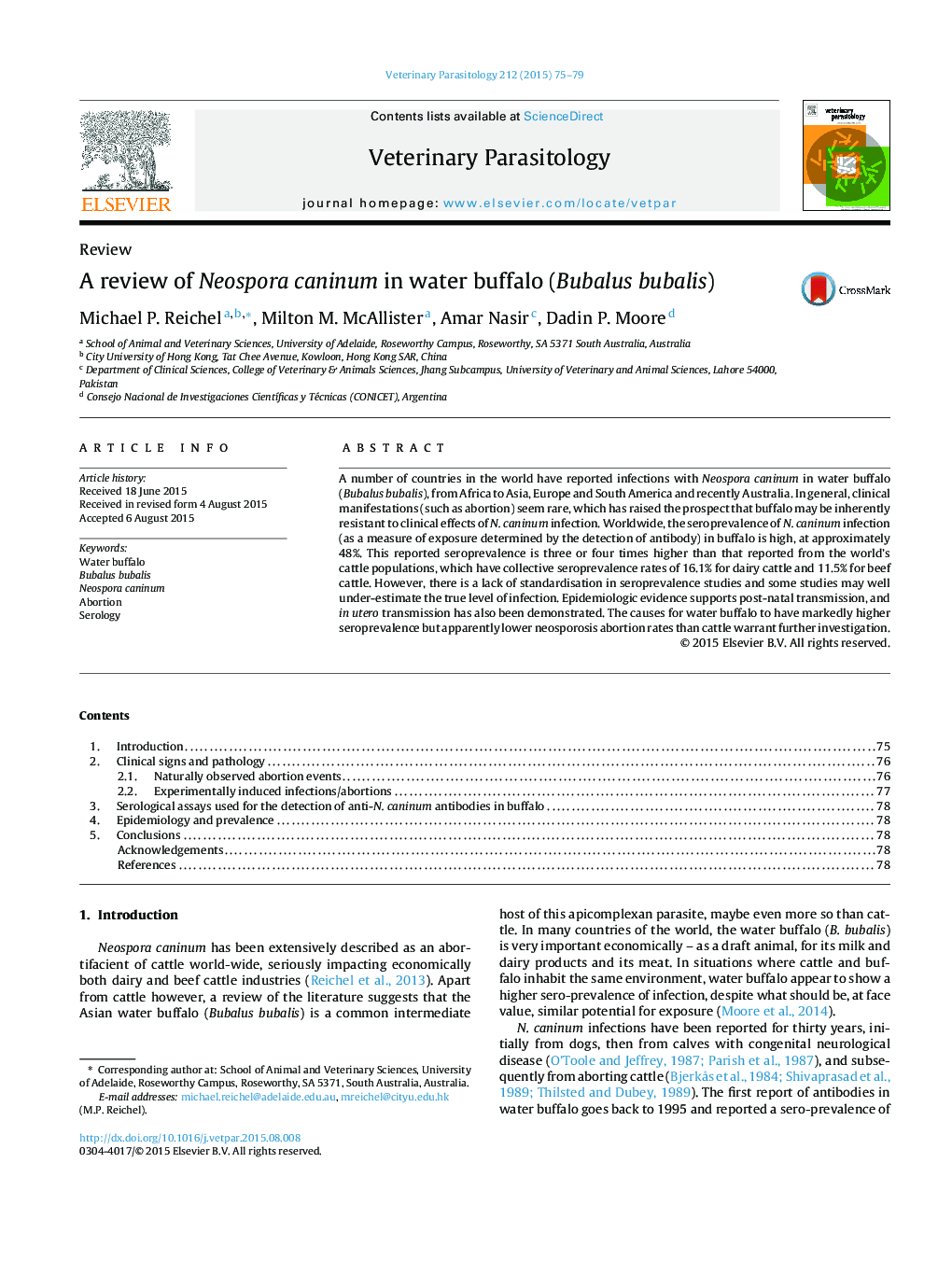| کد مقاله | کد نشریه | سال انتشار | مقاله انگلیسی | نسخه تمام متن |
|---|---|---|---|---|
| 5802330 | 1555666 | 2015 | 5 صفحه PDF | دانلود رایگان |

- Around the world water buffalo are at least three times more likely to be infected with Neospora caninum than cattle.
- Water buffalo appear to be more resistant to clinical manifestations of the infection, and lesions tend to be milder.
- Post-natal infection might be more important in buffalo.
- There is a need to standardise diagnostic assays being used in buffalo.
A number of countries in the world have reported infections with Neospora caninum in water buffalo (Bubalus bubalis), from Africa to Asia, Europe and South America and recently Australia. In general, clinical manifestations (such as abortion) seem rare, which has raised the prospect that buffalo may be inherently resistant to clinical effects of N. caninum infection. Worldwide, the seroprevalence of N. caninum infection (as a measure of exposure determined by the detection of antibody) in buffalo is high, at approximately 48%. This reported seroprevalence is three or four times higher than that reported from the world's cattle populations, which have collective seroprevalence rates of 16.1% for dairy cattle and 11.5% for beef cattle. However, there is a lack of standardisation in seroprevalence studies and some studies may well under-estimate the true level of infection. Epidemiologic evidence supports post-natal transmission, and in utero transmission has also been demonstrated. The causes for water buffalo to have markedly higher seroprevalence but apparently lower neosporosis abortion rates than cattle warrant further investigation.
238
Journal: Veterinary Parasitology - Volume 212, Issues 3â4, 15 September 2015, Pages 75-79